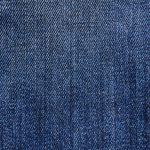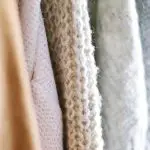Are you ready to dive into the world of cross stitching on cotton fabric? With this guide, you’ll learn all the essential techniques and tips to create beautiful pieces.
Whether you’re a beginner or an experienced stitcher, this article will walk you through selecting the right fabric, preparing it for stitching, transferring patterns, and perfecting your cross stitching techniques.
Get ready to unleash your creativity and create stunning cross stitched masterpieces on cotton fabric!
Table of Contents
Selecting the Right Cotton Fabric
When selecting the right cotton fabric for cross stitching, it’s important to consider the thread count and texture. The thread count refers to the number of threads per square inch of fabric. A higher thread count generally means a smoother and more even fabric, which is ideal for cross stitching. However, keep in mind that a higher thread count can also make the fabric denser and more difficult to puncture with the needle. On the other hand, a lower thread count may have a coarser texture, but it will be easier to stitch on.
In terms of fabric types, there are several options available for cross stitching. Aida cloth is a popular choice because it has a clearly defined grid, making it easier to count stitches and follow patterns. Evenweave fabric is another option, and it has a more even texture than Aida cloth. It’s important to choose a fabric that you feel comfortable working with and that suits your preferred stitching style.
When it comes to thread selection, consider using cotton embroidery floss, as it is specifically designed for cross stitching. It comes in a wide range of colors and is easy to work with. Other types of thread, such as silk or metallic threads, can add unique textures and shine to your project, but they may require more advanced stitching techniques. Ultimately, the choice of thread will depend on your personal preference and the effect you want to achieve in your cross stitch design.
Preparing Your Cotton Fabric for Cross Stitching
When it comes to preparing your fabric for cross stitching, there are a few key points to keep in mind.
First, you’ll want to familiarize yourself with fabric preparation techniques, such as washing and ironing, to ensure that your fabric is clean and smooth before you begin stitching.
Next, choosing the right fabric is essential for a successful cross stitch project. Different fabrics have different textures and thread counts that can affect the final result.
Lastly, it’s important to take steps to prevent fabric fraying. Using fray check or serging the edges can ensure that your finished piece looks professional and lasts for years to come.
Fabric Preparation Techniques
To ensure your cotton fabric is ready for cross-stitching, you’ll need to prewash it to remove any sizing or chemicals. This step is crucial as it will prevent any unwanted shrinkage or color bleeding during the stitching process. Here’s a simple guide to prepare your fabric:
- Fill a basin with lukewarm water and add a mild detergent.
- Gently agitate the fabric in the soapy water for a few minutes.
- Rinse the fabric thoroughly to remove any detergent residue.
- Lay the fabric flat on a clean, dry towel and roll it up to remove excess water.
- Unroll the fabric and carefully stretch it over a wooden embroidery hoop or frame to ensure it dries evenly.
Choosing the Right Fabric
If you want a successful cross-stitching project, it is important to choose the right fabric for your design.
While cotton fabric is the most commonly used for cross-stitching, there are alternative fabric options you can consider. Linen and Aida cloth are popular choices that offer different textures and finishes.
Linen has a more rustic look with its natural fibers, while Aida cloth has a grid-like pattern that makes it easier to count stitches.
When stitching on different fabric textures, there are a few tips to keep in mind. For smoother fabrics like cotton, use shorter and tighter stitches to ensure the design is clear and defined.
For textured fabrics like linen, longer stitches can create a unique effect.
Experiment with different fabrics and techniques to find what works best for your cross-stitching projects.
Preventing Fabric Fraying
One way you can prevent fraying is by applying a small amount of clear nail polish to the edges of your chosen material. This technique is especially useful for fabrics that tend to unravel easily, such as cotton.
To secure the fabric edges, start by cutting the fabric to the desired size. Then, carefully apply a thin layer of clear nail polish along the cut edges. Make sure to cover the entire length of the fabric to prevent fraying.
Allow the nail polish to dry completely before handling the fabric. This method creates a protective barrier that helps to hold the fabric fibers together, preventing them from unraveling.
It is a simple and effective way to ensure that your fabric stays intact and doesn’t fray during your cross-stitching project.
Choosing the Right Cross Stitch Pattern for Cotton Fabric
When choosing the right cross stitch pattern for cotton fabric, it’s important to consider the level of detail and complexity. Cotton fabric is a popular choice for cross stitch projects due to its durability and ease of use. Here are some tips to help you choose the perfect pattern for your cotton fabric:
-
Consider the size: Choose a pattern that fits the size of your fabric. A smaller pattern will be easier to stitch on cotton fabric, while a larger pattern might require more time and effort.
-
Choose the right colors: When choosing cross stitch colors for cotton fabric, it’s important to consider the fabric’s color and texture. Opt for colors that will stand out and complement the fabric’s natural shade.
-
Look for clear instructions: A good cross stitch pattern should have clear and detailed instructions. Make sure the pattern includes a color chart, stitch diagrams, and any special instructions.
-
Personalize your design: If you want to create a personalized cross stitch design, look for patterns that allow you to add your own elements or customize the design.
-
Consider your skill level: Choose a pattern that matches your skill level. If you’re a beginner, start with a simple design and work your way up to more complex patterns.
Transferring the Pattern Onto the Cotton Fabric
When transferring the pattern onto your cotton fabric, it’s important to consider the best transfer methods to ensure accurate and clear markings.
There are several options to choose from, such as using a water-soluble pen or carbon paper.
Additionally, it’s crucial to take steps to avoid smudging or fading during the transfer process.
This can be done by handling the fabric with clean hands and using a gentle touch when applying the markings.
Best Transfer Methods
To achieve the best results when transferring your cross stitch pattern onto cotton fabric, you should consider using transfer pens or iron-on transfers. These methods provide a clear and precise way to transfer the design onto the fabric. They also help prevent smudging, ensuring that your pattern stays intact throughout the stitching process.
Here are some advantages of using transfer pens or iron-on transfers:
-
Transfer pens: These pens allow you to trace the pattern directly onto the fabric, giving you complete control over the design. They come in various colors and are easy to use, making them a popular choice among cross stitch enthusiasts.
-
Iron-on transfers: These transfers are printed designs that can be easily transferred onto the fabric using heat. They provide a quick and efficient way to transfer the pattern, saving you time and effort.
-
Smudging prevention: Both transfer pens and iron-on transfers help prevent smudging, ensuring that your pattern stays crisp and clear. This is especially important when working with cotton fabric, as it can easily absorb ink and cause smudging.
Avoiding Smudging or Fading
To avoid smudging or fading, make sure you’re using the right tools and techniques for transferring your design onto the fabric.
When it comes to smudging prevention, make sure your hands are clean and dry before handling the fabric. Oils or dirt on your hands can transfer onto the fabric and cause smudging. Additionally, use a fine-tip transfer pen or pencil to create your design on the fabric, as this will minimize the risk of smudging.
To prevent color fading, consider using fade-resistant embroidery threads. These threads are specially designed to retain their color even after multiple washes. Another tip is to avoid exposing your cross-stitched fabric to direct sunlight for prolonged periods, as this can cause the colors to fade over time.
Cross Stitching Techniques for Cotton Fabric
One of the most important steps in cross stitching on cotton fabric is choosing the right needle. The needle you use can greatly impact your stitching experience and the final outcome of your project. Here are some tips to help you select the perfect needle:
- Size: The size of the needle should correspond to the fabric count. Use a smaller needle for higher fabric counts and a larger needle for lower fabric counts.
- Point: Choose a needle with a sharp point for precise stitching on cotton fabric.
- Material: Opt for a needle made of stainless steel or nickel-plated steel for durability and smooth stitching.
- Eye: Ensure that the needle has a large enough eye to accommodate your chosen thread.
- Grip: Consider using a needle with a textured grip or a rubberized handle for better control and comfort during stitching.
Once you have chosen the right needle, you can move on to advanced cross stitching techniques. These techniques include:
- Blending colors: Experiment with different shades and hues to create depth and dimension in your cross stitch design.
- Fractional stitches: Use half stitches or quarter stitches to add intricate details and smooth curves to your pattern.
- Specialty stitches: Incorporate stitches like French knots, backstitch, or satin stitch to enhance the overall look of your design.
- Stitching over one fabric thread: For more intricate designs, stitch over just one fabric thread to achieve finer details.
- Customizing patterns: Modify existing patterns or create your own by combining different motifs and elements to make your cross stitch truly unique.
Finishing and Caring for Your Cross Stitched Cotton Fabric
After completing your cross stitch project on cotton fabric, it’s important to properly finish and care for it to ensure its longevity and preserve its beauty.
Caring for delicate fabrics like cotton requires gentle handling and attention to prevent any damage or color bleeding. To start, gently wash your cross stitched cotton fabric using mild detergent and lukewarm water. Avoid using harsh chemicals or bleach as they can weaken the fabric and cause color fading. Gently squeeze out excess water and lay the fabric flat on a clean towel to air dry. Avoid wringing or twisting the fabric, as this can distort the stitches and cause them to unravel.
To prevent color bleeding, it’s recommended to wash your cross stitched cotton fabric separately or with similar colors. If you notice any color bleeding during the washing process, immediately rinse the fabric with cold water to stop the bleeding. It’s also a good idea to test the colorfastness of your thread before starting your project to ensure that the colors won’t bleed when washed.
Once your cross stitched cotton fabric is dry, iron it on the reverse side using a low heat setting. Place a clean, dry cloth or pressing cloth over the fabric to protect the stitches from direct heat and to prevent any potential damage.
Conclusion
In conclusion, you now have all the information you need to successfully cross stitch on cotton fabric.
By selecting the right fabric, preparing it properly, choosing the perfect pattern, and transferring it onto the fabric, you are set up for success.
Remember to use the correct cross stitching techniques and take care of your finished piece by framing it or washing it gently.
With these steps, you can create beautiful cross stitch designs on cotton fabric. Happy stitching!
- What Is Pochampally Ikat? a Journey to India’s Silk City - June 27, 2025
- What Is Pochampally Ikat? a Journey to India’s Silk City - June 27, 2025
- What Is Pochampally Ikat? a Journey to India’s Silk City - June 27, 2025





